These are images relating to research in the Brodie lab on the burrower bug, Sehirus cinctus, taken in the spring of 2004. These bugs, though native in the area, feed primarily on the introduced mint Lamium purpureum which flowers and fruits in large numbers in agricultural fields in the early spring. The maternal bugs bring the Lamium nutlets to their offspring.
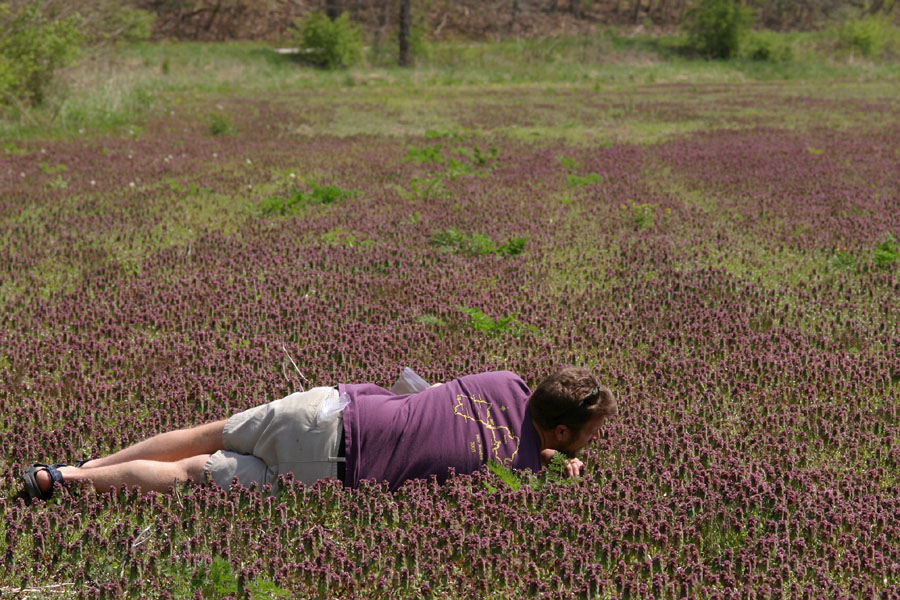
Butch Brodie collecting Sehirus cinctus in an agricultural field north of Bloomington, 4/15/04. More pictures of Sehirus collection can be found here.
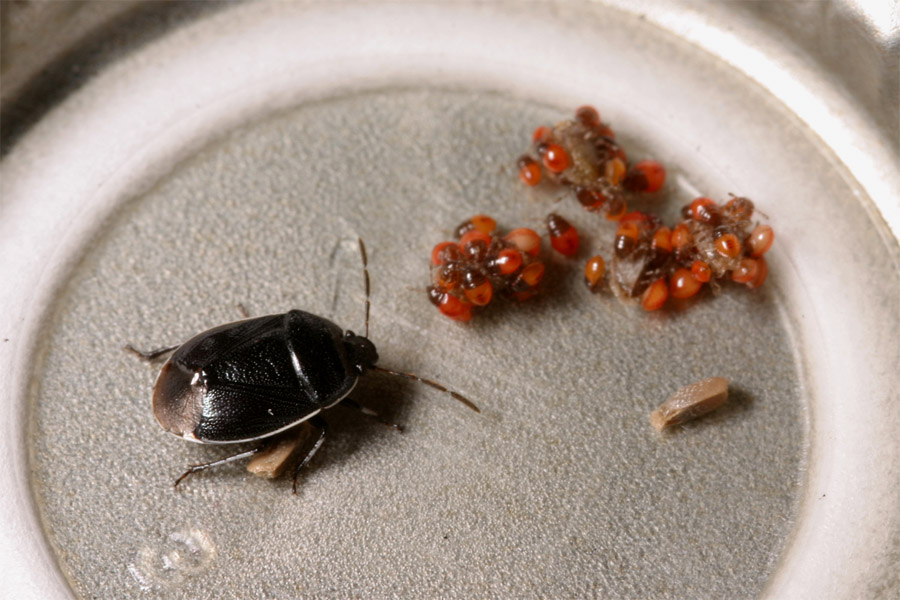
A maternal bug with nutlets and young in a bottle cap, 5/18/04.
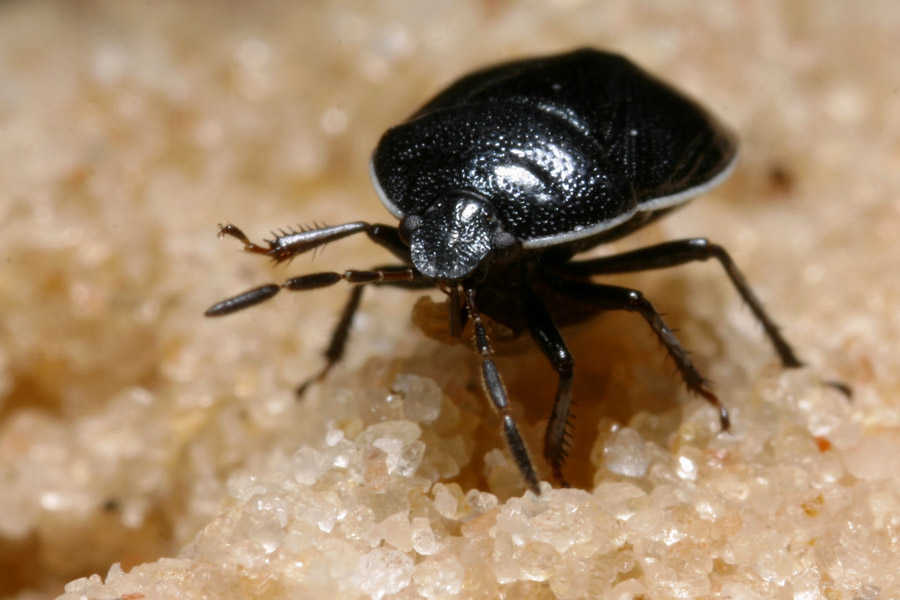
Maternal bug carrying a nutlet, 5/13/04.
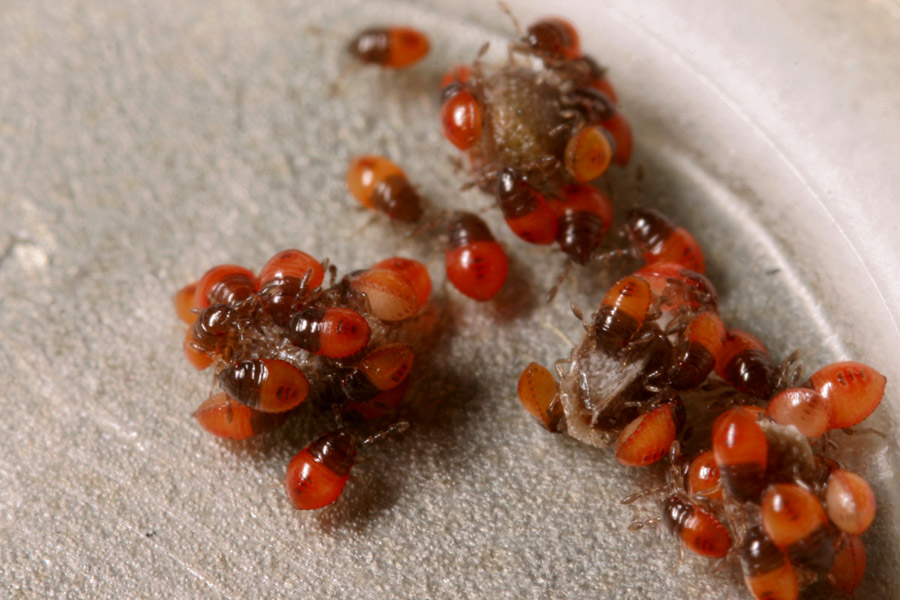
Closer view of first-instar young feeding on nutlets, 5/18/04.
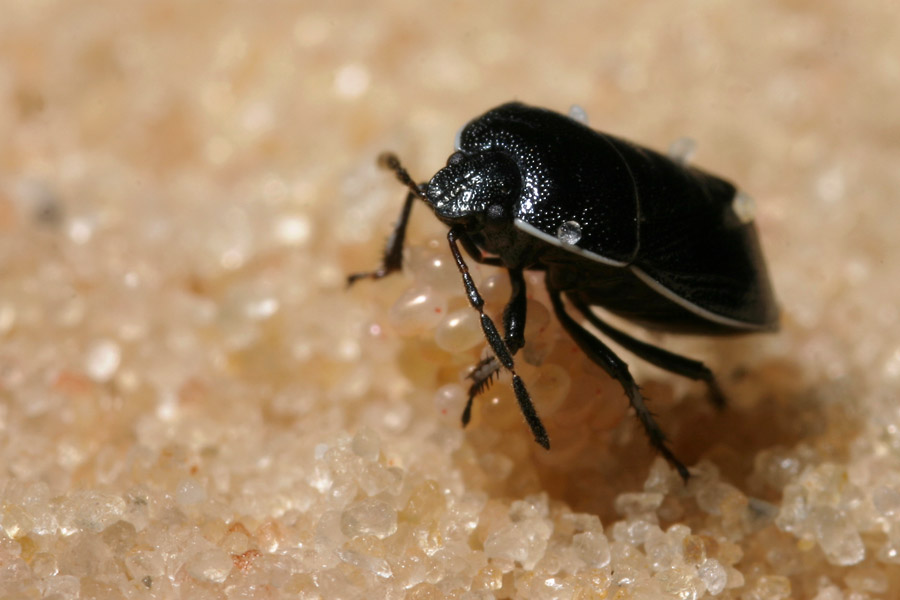
Bug with eggs, 5/19/04.
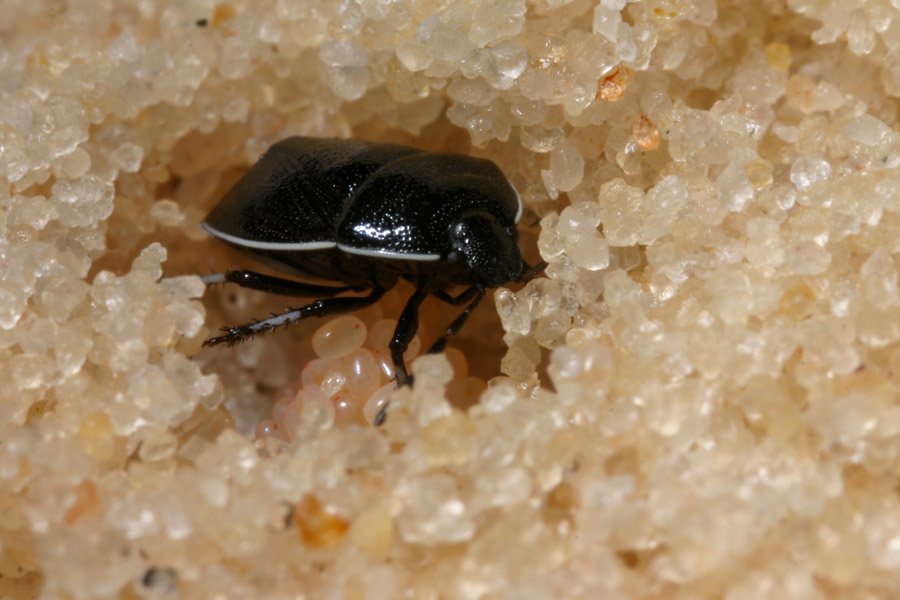
Another bug with eggs, 5/19/04.
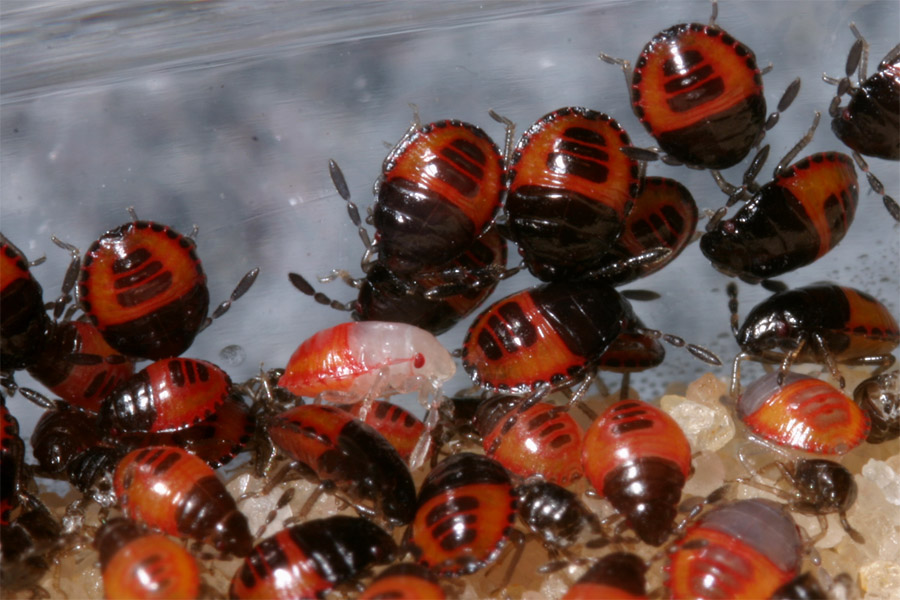
Young bugs, 5/19/04. Most bugs visible are second-instar, the whitish one in center has just molted and a few first-instar bugs are visible at lower right.
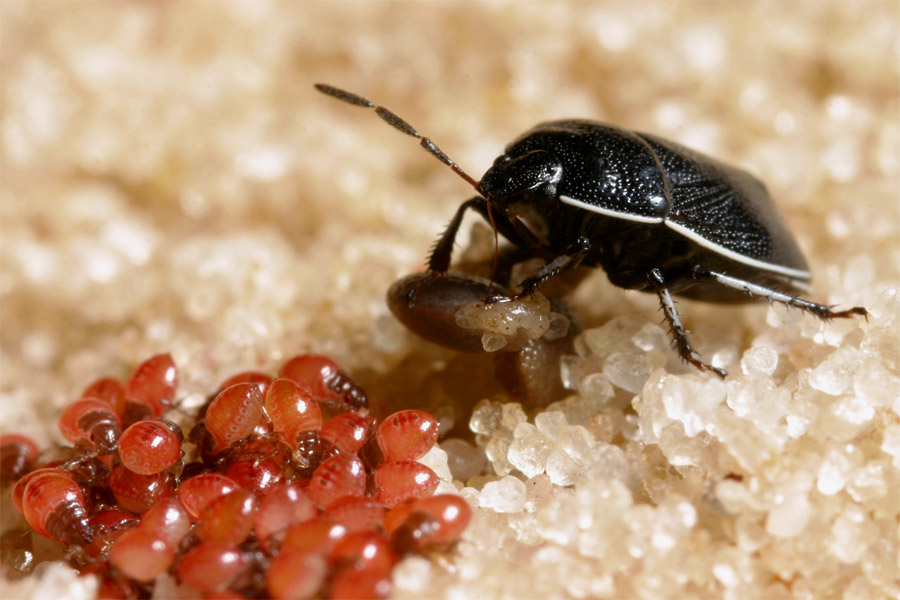
Maternal bug bringing a nutlet to first-instar young, 5/6/04.
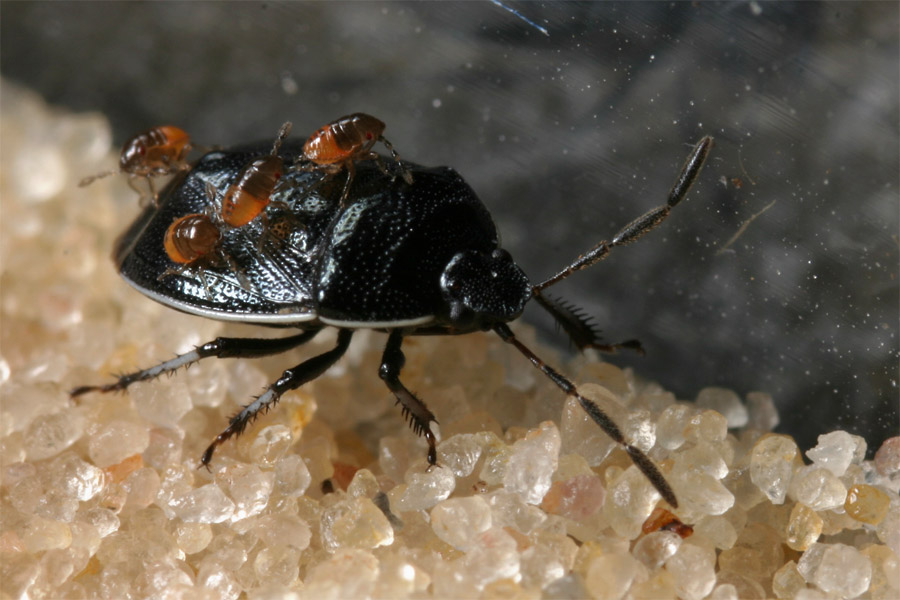
Maternal bug with first-instar young on her back, 5/7/04.
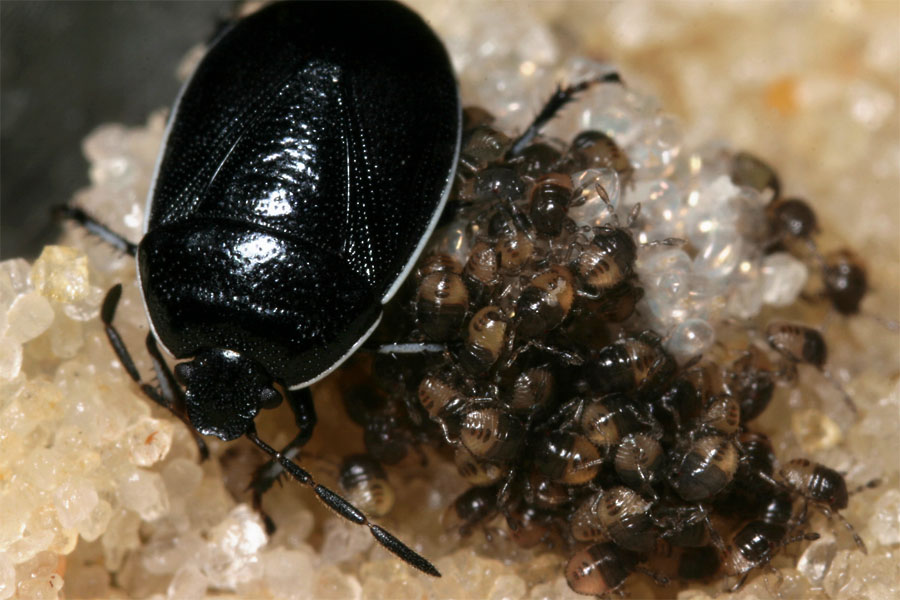
Maternal bug with newly-hatched young, 6/4/04.
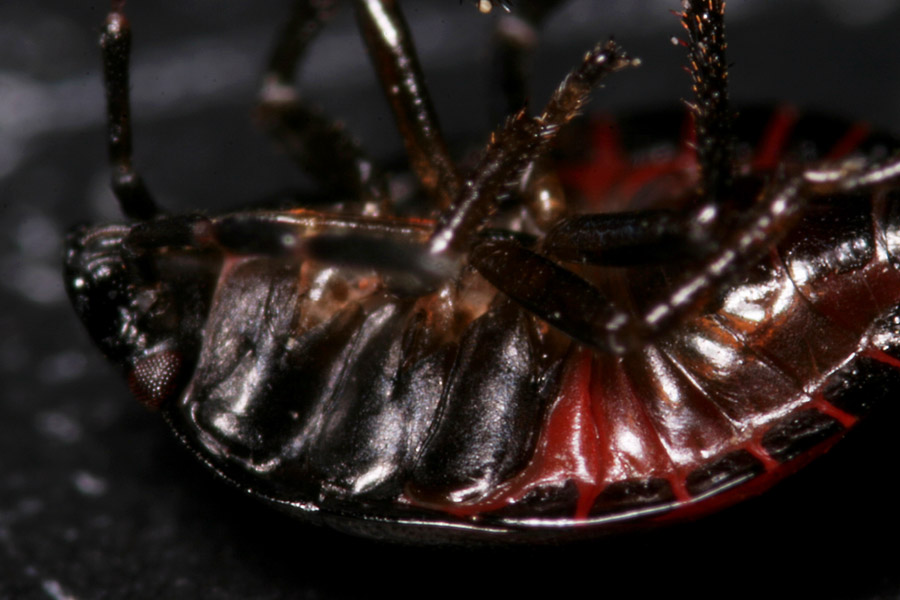
Side view of a subadult (fourth or fifth instar), 6/11/04.
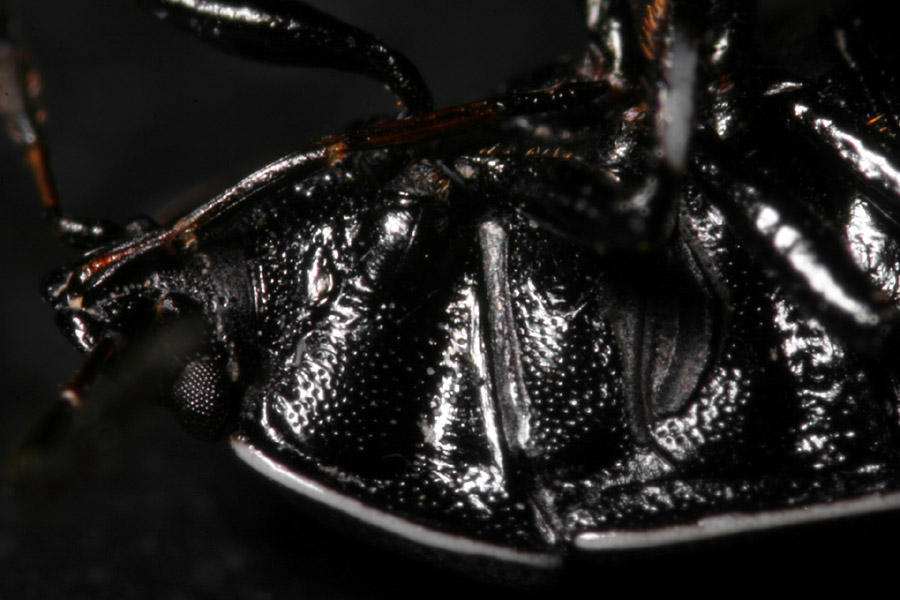
Side view of an adult, 6/11/04.
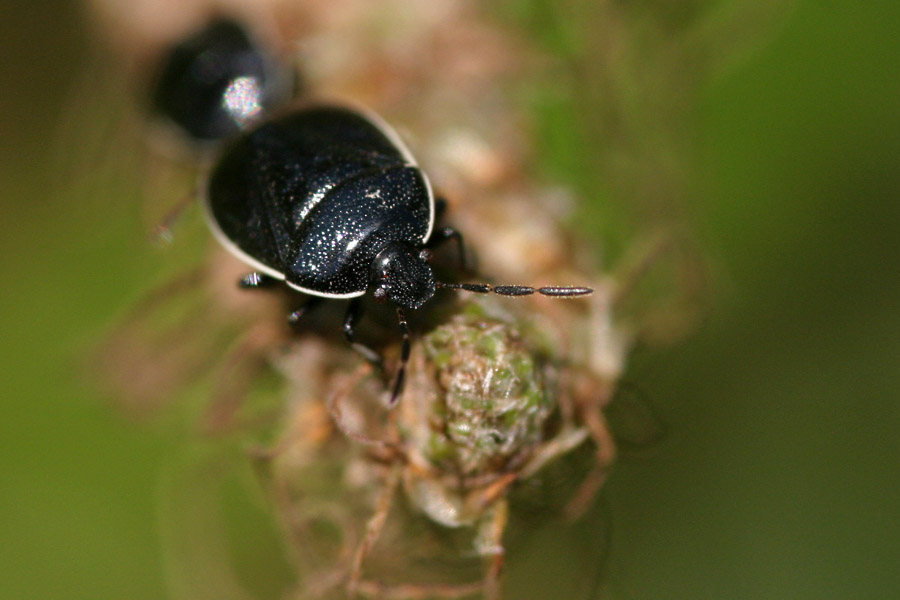
Adult bugs on Plantago lanceolata, 6/19/04.
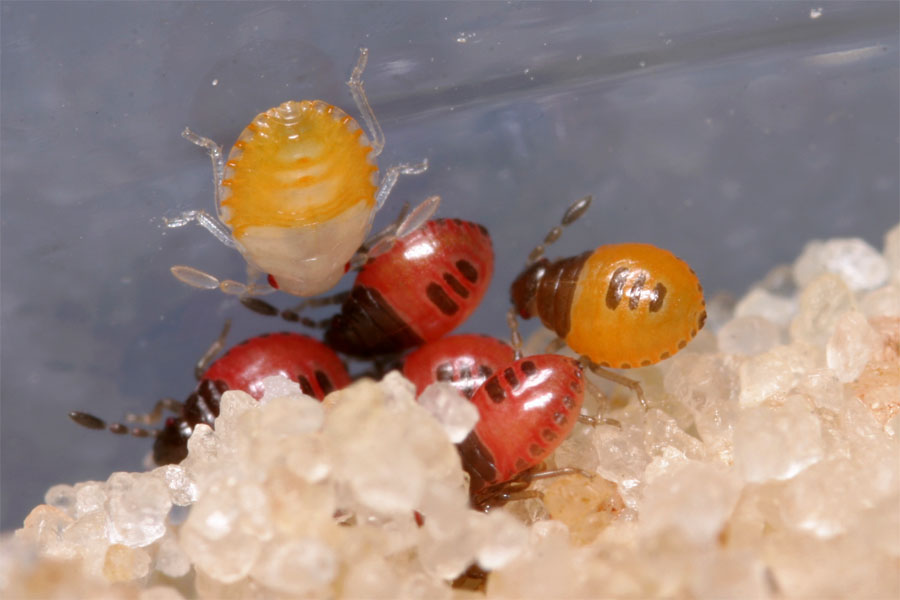
First-instar young with a freshly-molted second-instar bug at top left, 6/7/04. Though they are usually red, yellow immature bugs show up occasionally. The coloring is thought to be aposematic, and most potential predators (e.g., spiders) won't eat them. The only animal we could find that will eat them reliably is Cletus, an adult male Eublepharis macularius.
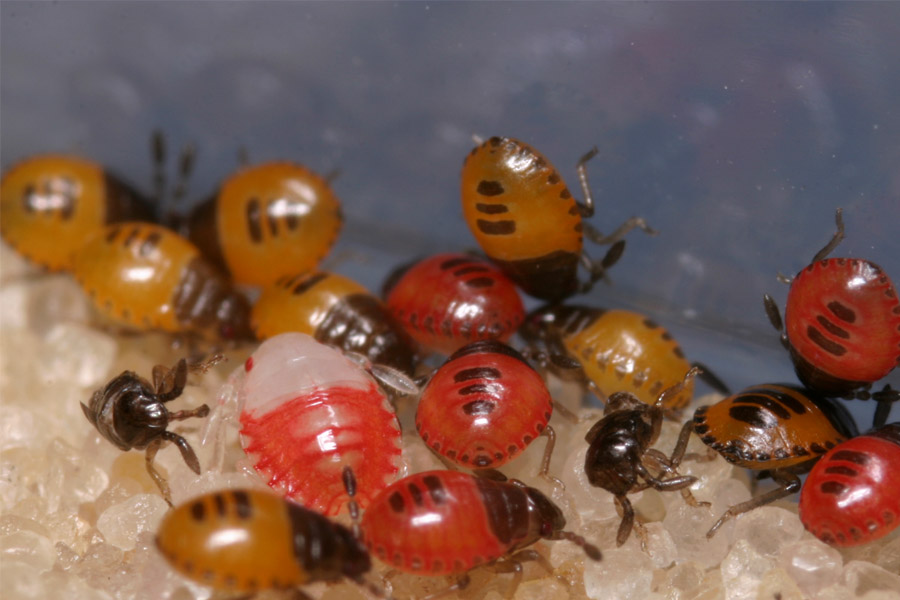
More young bugs with a mix of yellow and red individuals, 6/7/04. Most are first-instar, but a couple of second-instar bugs are visible.
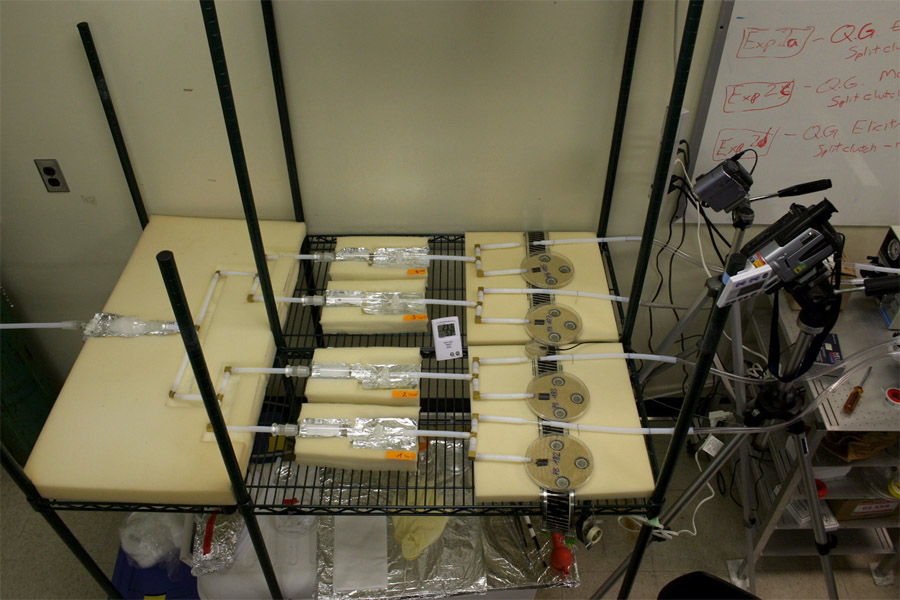
Great big complicated setup for bug research, 5/25/04. Air comes in at left, exits at right. At the right you can see four petri dishes, each with a maternal bug and her clutch of first-instar young. In the center are four chambers that can house hungry young bugs, potentially important pheromones, etc. So we can see what effect the upstream stimulus has on maternal provisioning, and videotape the responses with the digital camcorders at far right.
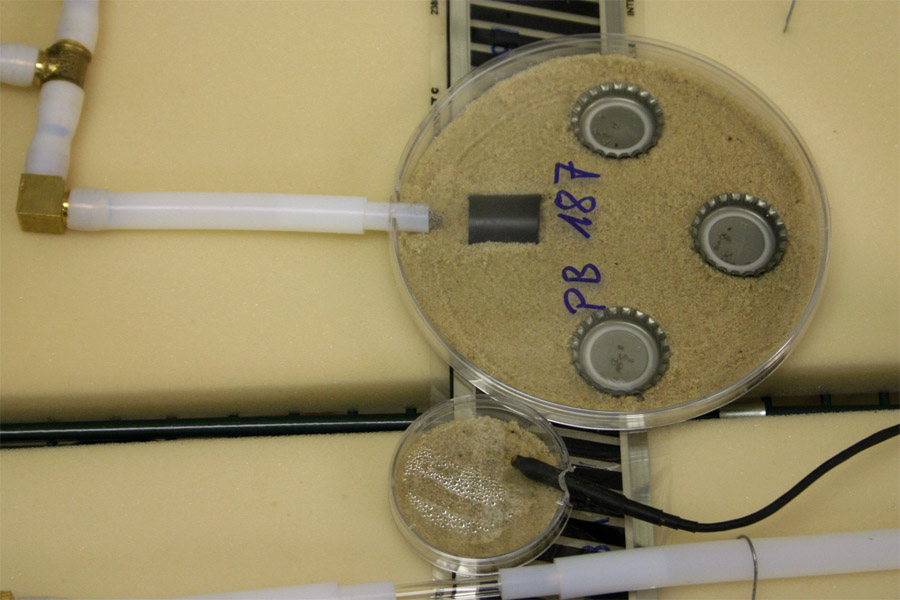
Closer view of the above, 5/25/05.
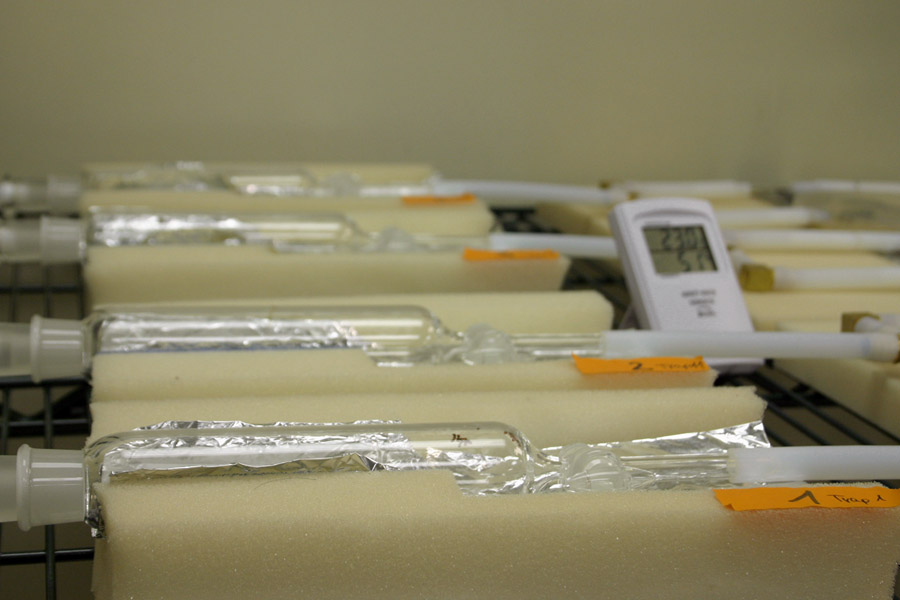
The stimulus chambers, here being occupied by clutches of hungry first-instar young, 5/25/04.
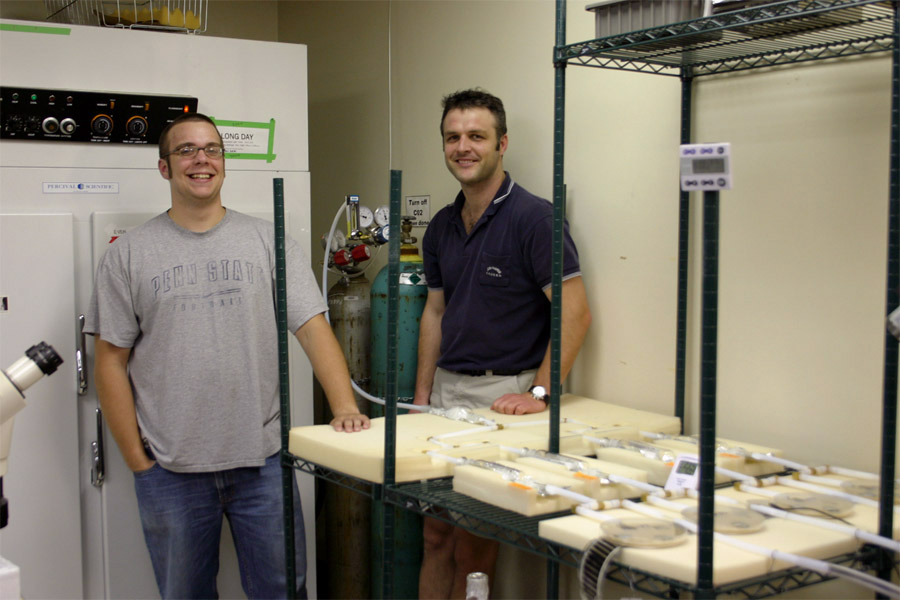
John Chuckalovcak (left) and Matthias Koelliker (right) standing proudly with their handiwork, 5/25/04.
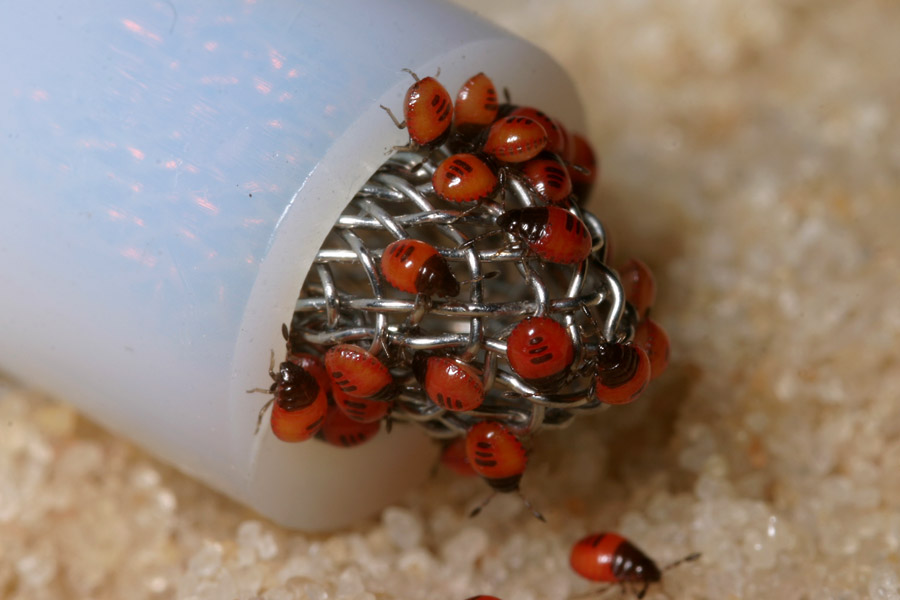
Young bugs in the downstream petri dishes, which for some reason tend to cluster around the air input, 5/26/04.
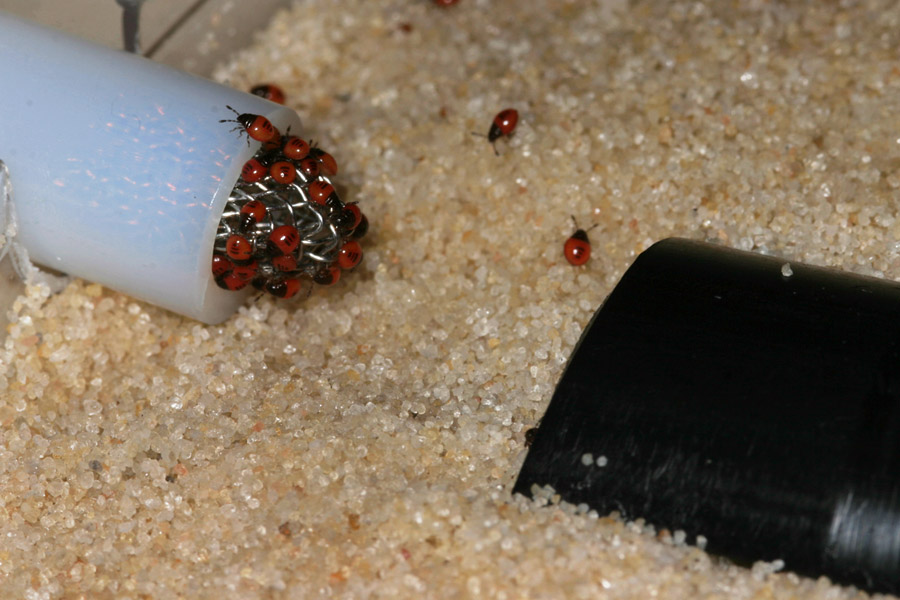
Wider view of the above, 5/26/04.
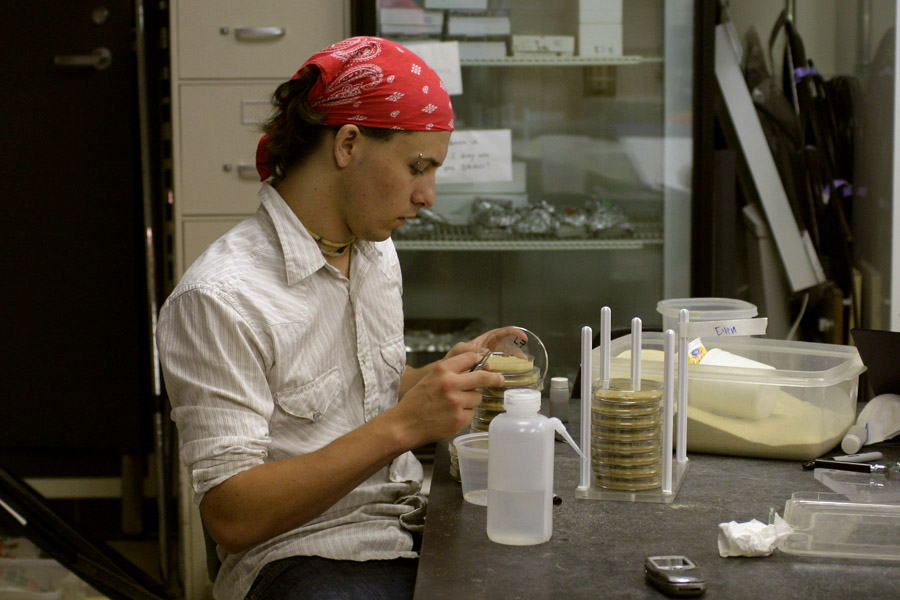
David, one of the intrepid bug workers, 5/5/04.
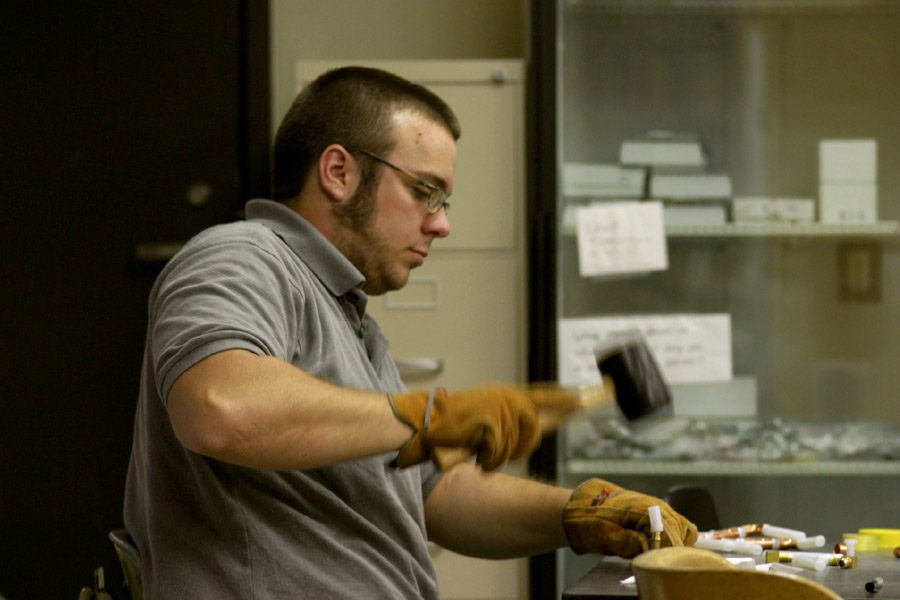
John, working on the construction of the pheromone apparatus, 5/3/04.
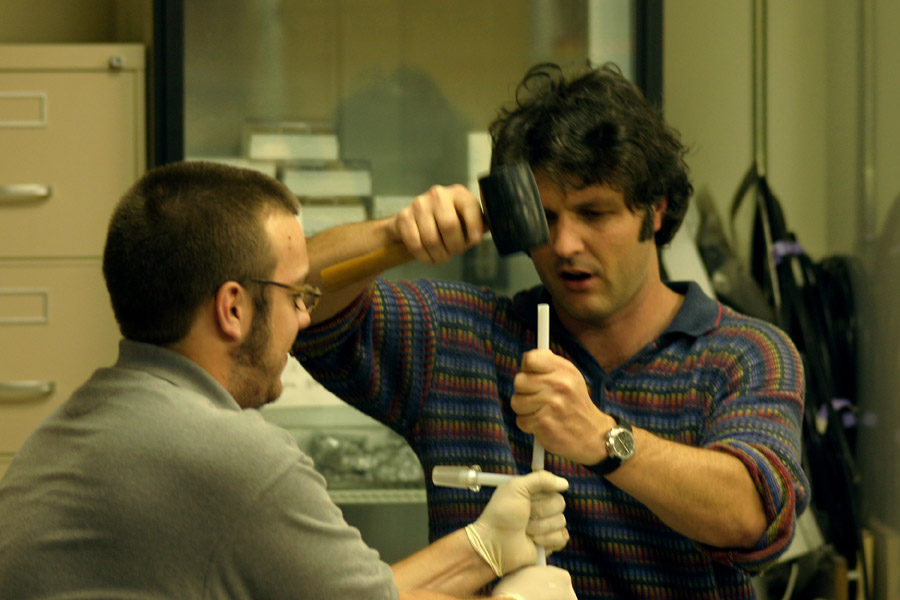
John and Matthias constructing the phereomone apparatus, 5/3/04. Yup, the white balance on this one sucks.